 |
Cleaning Products |
 |
|---|
 |
Cleaning Products |
 |
|---|
|
TEA TREE OIL from AUSTRALIA 
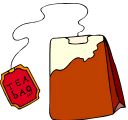
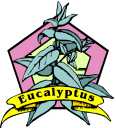 plus (+) EUCALYPTUS OIL - Based - Deodorizer Concentrate (FOR PRICING, GO TO : "Nok-im'-ded" under 'N' ) |
||
|---|---|---|
|
"GREEN": "ENVIRONMENTALLY-RESPONSIBLE"
BACKGROUND : "Nokimded"™ is an amazingly unique concentrated deodorization product for the carpet and fabric industry consisting of tea tree and eucalyptus oils from Australia. The basis for "Nokimded"™ is revolutionary extracts from the famous "TEA TREE" (melaleuca alternifolia), a member of the Myrtaceae found in Northern New South Wales Australia. There are over 300 varieties of "TEA TREE" throughout Australia but ONLY this one boasts of "amazing" powers. This "TEA TREE" OIL , according to precedence , provides anti-septic , germicidal , anti-fungal , and anti-bacterial immune boosting qualities that may be applied to a variety of health conditions. "TEA TREE" OIL was used by Aborigine tribes for thousands of years as a healing plant when its leaves were crushed into mudpacks to cuts and skin infections. Myths tell of a "magical" healing lagoon , in which the local tribe bathed as a treatment for wounds , burns and other ailments. In fact , it was a pond into which tea tree leaves had fallen , creating a naturally antiseptic bath. Famous British explorer Captain Cook discovered "TEA TREE" in 1770 when he and his men brewed the leaves of the tree to drink to prevent scurvy. Although it proved ineffective on scurvy , he returned home with his new discovery but it's merits was discounted by medical experts at the time. As early as 1923, Australian scientific evidence began to substantiate the "TEA TREE's" antiseptic and bactericidal properties. It's "cure-all" effects made it standard issue in the first aid kits of the Australian Army and Navy during World War II . In 1933 , the British Medical Journal reported that "TEA TREE"OIL was "a powerful disinfectant-non poisonous and non-irritant ." By 1955 , the United States Dispensatory stated that "TREE TEA" OIL was actively germicidal..."with an antiseptic action 11 to 13 times that of carbolic acid." Recent research has even discovered that "TREE TEA" OIL can fight Methicillan-resistant Staphylcoccus aureus (M.R.S.A.-the so-called, hospital killer bug). The continent of Australia is the largest "TEA TREE" supplier in the world. "TEA TREE" OIL is a complex substance made up of almost 50 chemical compounds. The OIL CLAIMS To Have 4 MAIN FUNCTIONS:
Unfortunately, the exorbitant expense of registering this type of product with the FEDERAL E.P.A. prohibits the use of any cleaning or chemical term other than "DEODORANT" to be legally applied to this product in many instances. "Nokimded" ™ DEODORANT --- U.S. Patent # : 6 , 019 , 963 -- --USES AUSTRALIAN PLANT OIL EXTRACTS ----RESTORATION STRENGTH -------CONCENTRATED ECONOMY  is a highly concentrated deodorizer derived from 'NATURAL' TEA TREE & EUCALYPTUS OILS. This product contains
NO Synthetic -or- Masking Perfumes to counter the offensive source of the foul odors.
All odor dispersing agents in "Nokimded" ™
is a highly concentrated deodorizer derived from 'NATURAL' TEA TREE & EUCALYPTUS OILS. This product contains
NO Synthetic -or- Masking Perfumes to counter the offensive source of the foul odors.
All odor dispersing agents in "Nokimded" ™DEODORANT are essentially 'NATURAL' and 'BIODEGRADABLE'. It's odor-neutralizing formulation disperse malodors under many various circumstances such as : a carpet exposed to water from storm , flood , overflow , or pipe breakage which takes on "a musty smell" from mold & mildew growth ; a carpet contaminated by pet urine or feces ; and/or a fire-damaged building or home overcome by a strong smell of smoke. Further, this 'NATURAL' and 'NON-HAZARDOUS' Deodorizer upon usage DOES NOT effect stain resistance through chemical fiber protection of treated fabrics or carpeting. "Nokimded" ™ DEODORANT can be applied with pressure , pump-up , or electric sprayers ; water-based foggers ; sponge ; or injection type applications. EFFECTIVE AFTER : Fires ; Floods ; Musty Mold & Mildew Odors ; Pet Mishaps; Sewer Back-ups. EFFECTIVE IN : Autos ; Barns ; Bathrooms ; Cafeterias ; Cars ; Closets ; Gymnasiums ; Health Care ; Hospitals ; Garages ; Hotels ; Infant/Invalid Care ; Lockers ; Motels ; Planes ; Restaurants ; Sheds ; Shower rooms ; Shuttles ; Storage Facilities ; Trucks ; Trains . EFFECTIVE ON : Carpets ; Ceilings ; Clothing ; Drapes ; Floors; Furniture ; Drywall ; Insulation ; Mattresses ; Padding ; Plaster; Upholstery ; Walls USAGE: (TEST IN A SMALL , INCONSPICUOUS AREA BEFORE ANY MAJOR USAGE) General & Laundry Deodorization : Mix 8 oz. of "Nokimded" ™ Concentrate into one gallon (128 oz.) of water. Carpet Treatment : Pre-spray ; Truckmount Slurry ; Clean Water Restoration -- Mix 16 oz. of "Nokimded" ™ Concentrate into one gallon (128 oz.) of water , apply , wait 10 minutes , and extract. Water & Fire Damage ; Unsanitary Water Restoration -- Mix 32 oz. of "Nokimded" ™ Concentrate into one gallon (128 oz.) of water , apply , wait 10 minutes , and extract. Boosting/Deodorizing Carpet Extraction Treatment : Dilute Carpet Extraction Treatment with water into solution tank as per label directions. Add 1 to 2 oz. of "Nokimded" ™ Concentrate to pre-mixed carpet cleaning solution. THIS REAL TIME-SAVER will clean and deodorize in ONE-STEP!
**Appearance : CLEAR **Odor : FRESH, CLEAN **P.H. : NEUTRAL **Specific Gravity : 1.00 **Flash Point : NONE **Biodegradable : YES Safety Data Package (Liquid Concentrate) : 1/55 gallon drum ; 1/5 gallon pail ; 4/1 gallon case ; 12/16 oz. pint case |
||
|
|
||
|
"THE STEAMIN' GUM GUN"® 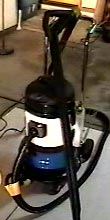 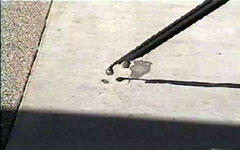 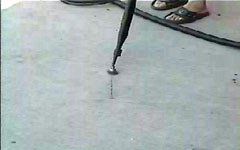 EASILY REMOVES CHEWING GUM from HARD SURFACES such as Asphalt, Concrete, Marble, Parking Lots, Shopping Malls, Sidewalks, Terrazzo Requires Both Equipment + Liquid Chewing Gum Liquifier/Emulsifier Uses "NATURAL STEAM" in the Cleaning & Removal Process ! |
||
|---|---|---|
|
A TOTAL HARD-SURFACE CHEWING GUM REMOVAL SYSTEM REQUIRES : State-of-the-Art Engineered Equipment "THE STEAMIN' GUM GUN"® (PLUS) + Specially-Formulated Gum Liquifier/Emulsifier "GUMMY GONE® " (EQUALS) = COMPLETE CHEWING GUM REMOVAL ( including Residue ) INTRODUCING... "THE STEAMIN' GUM GUN ®" Is Your Airline Terminal, Business, Catering Hall, Church, City Street, Mall, Parking Garage, Restaurant, Retail Storefront, School, Synagogue, or Train Station plagued by those Disgusting, Unsightly, "Black" Chewing Gum Stains on the Sidewalks or Parking Spaces ? Instantly, re-build your image with our Effective Hard-Surface Chewing Gum Removal System...featuring "THE STEAMIN' GUM GUN ®" and "GUMMY GONE ®" ! "THE STEAMIN' GUM GUN ®"combined with our Chewing Gum Liquifier/Emulsifier--"GUMMY GONE ®"--lifts "the blackest"and "oldest" chewing gum stains from hard surfaces (ie. : concrete, asphalt, terrazzo) for easy removal WITHOUT leaving sticky residues."THE STEAMIN' GUM GUN ®" simultaneously self-generates and applies natural "steam" to soften and lift the gum wad away from a hard surface; applies "GUMMY GONE ®" for complete emulsification; agitates this same hard surface with a 1 3/4 inch wire brush; and vacuums up any residues and excess moisture ... in ONE Quick & Easy 10 Second Action !! Feature Unit of Measure Power Supply.......................................................................50-60 Hz Pressure ......... 58 P.S.I. Maximum Output . 3450 WATTS Stainless Steel Boiler Output ... 2200 WATTS Vacuum Output . 1200 WATTS Water Temperature 162-207 degrees FAHRENHEIT Steam Temperature .......... 279 degrees FAHRENHEIT Steam Production . 62 GRAMS per minute Water Reserve Tank 3 LITERS ( 1 liter = 1. 057 quarts ) Chemical Detergent Tank 3 LITERS ( 1 liter = 1. 057 quarts ) Vacuum Drum Capacity 5.5 LITERS ( 1 liter = 1. 057 quarts ) Air Flow 200 CUBIC METERS per hour Hose Length 13 FEET Wand Length 4 FEET Steamin' Gum Gun's Control Panel Steam , Detergent , Vacuum Switches -All-in-One ! Power Cord 16.4 FEET Wire Brush 1 Ύ inches Weight 66.1 LBS. Package Dimensions 2 FT. X 1.5 FT. X 2.5 FT. Included Attachments : Small Triangular Brush ; Large Nylon Brush ; Small Nylon Brush ; Wire Brushes ; Stainless Steel Wool Pad ; Steam Scraper ; Steam Plunger ; Floor Tool with Squeegee , Brush , & Cloth Holder Inserts OTHER USES : Baseboard Cleaning; Cleans & Sanitizes Hard Surfaces without Chemicals; Degreases Kitchen Floors and Oven Hoods; Graffiti Removal; Mold & Mildew Stain Removal; Steams Off Greasy Grime and Dried-on Dirt . VIEW A VIDEO DEMONSTRATION NOW...Seein' is Believin' (click here) "HARD-SURFACE CHEWING GUM REMOVAL SYSTEM" REFER TO : "Gummy Gone" for Hard-Surface Chewing Gum Removal combined with "The Steamin' Gum Gun ® " REFER TO : "Rid-A-Gum" for Soft-Surface Chewing Gum Removal. |
||
|
( Equipment ) 1 Unit 2-6 Units 7 & MORE |
$ 4,245.00 ea. $ 3,925.00 ea. $ 3, 680.00 ea. |
$ 4,245.00 ea. $ 3,925.00 ea. $ 3, 680.00 ea. |
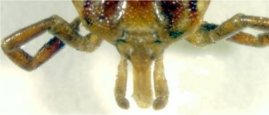 ALL NATURAL "Tick Guard"    NON-DEET TICK REPELLENT ( Self-Application ) for HUMANS & PETS | ||
|---|---|---|
| "I.P.M. ( INTEGRATED PEST MANAGEMENT )
Friendly " : A "MINIMUM RISK PESTICIDE " Product Providing an EFFECTIVE & ENVIRONMENTALLY SENSITIVE APPROACH to Pest Management  "Tick Guard" is a completely Safe, "Non-toxic" and NATURAL WAY to keep safe from Ticks and the diseases these pests spread, especially Lyme Disease. It's special blend of natural botanical extracts act as a powerful repellent against Ticks...and minimizes the chances of Tick bites. It's use fulfils the need for personal self-protection from biting ticks... and the likelihood of contracting Lyme disease. "Tick Guard" contains ALL-NATURAL Botanical Ingredients; and is a DEET-FREE product containing only the purest, tick-repelling essential oils. BE NATURALLY SAFE...Great for KIDS & PETS ! ACTIVE INGREDIENTS : Citric Acid : O.15 % Peppermint Oil : 0.60 % Lemon Grass Oil : 0.60 % Rosemary Oil : 0.60 % Potassium Sorbate : 0.02 % Inert Ingredients : Water : 95.83 % Lecithin : 2.20 % The pure essential NATURAL insect repelling oils used in "Tick Guard" when sprayed directly onto the skin or clothes creates a surface film that irritates the sensory glands of the tick. This condition causes to tick to "jump off" instead of biting. FAQ About "TickGuard" Q. Does "Tick Guard" work against Mosquitoes or other biting insects ? A. NO ! "Tick Guard" is specifically formulated to repel ticks !! Q. How long between applications should I re-apply ? A. It depends on an individual's personal activity. Usually the products last for 2-3 hours. If excessive perspiration or swimming is involved re-apply as needed . Q. Can I use "Tick Guard" on my pets ? A. YES..."Tick Guard" is recommended by many holistic vets to their clients. When applying to long-haired dogs exrra-care is need to cover the hair or work "Tick Guard" into the skin . DO NOT spray directly onto the animal's face but apply to your hands first. Q. Does "Tick Guard" dry the skin ? A. NO...the ingredient "Lecithin" act as a skin moisturizer . The products do NOT contain drying alcohol . Q. Does "Tick Guard" have an offensive odor when applied ? A. NO...The peppermint oil NOT only acts as a powerful repellent but also has a very pleasant aroma . Q. Will "Tick Guard" stain clothing when applied ? A. NO !! DIRECTIONS : Apply directly to skin and clothes. Reapply as often as necessary. TESTIMONIALS Introduction : ...we field tested your natural/botanical repellant "TickGuard" on nymphal and larvbal northern black-legged ticks...Credentials :...received my PhD in medical entomology with minors in parasitology and microbiology ...While working at Johnson Wax, I was involved with both laboratory and field testing of repellants to a wide variety of arthropods including mosquitoes...and ticks. As a Product Research Entomologist at Johnson's Wax, I directed operations at the Biological Research Center, the Center's Insectary and was involved in the developmental testing of new repellant formulations including DEEP WOODS OFF. Preliminary Field Trials : Preliminary efficacy tests on "TickGuard" were performed during peak infestation periods in June 1998 . Data was collected in a heavily tick infested area in Wading River, New York by two experienced investigators utilizing two testing methods . IN CONCLUSION : All of our preliminary tests indicate that "TickGuard" is an effective tick repellant . --- Edward M. Bosler, PhD I want to THANK YOU for a terrific product . I do a lot of hiking in woodlands...I have two dogs that accompany me on my hikes. We had been finding an average of between five and eleven ticks between the three of us on our return from each hike. The dogs use a commercial tick/flea spot control, and still had ticks at the end of each hike ... Since using your product, "TickGuard" , we have no ticks. All I do is spray my clothes in the morning before we go out, and spray both dogs...I think it's truly amazing that we are now tick-free ! ... Thank you again, with gratitude, Sharon L. TICKS : Ticks are blood feeding external parasites of mammals, birds, and reptiles throughout the world. Approximately 850 species have been described worldwide. There are two well established families of ticks, the Ixodidae (hard ticks), and Argasidae (soft ticks). Both are important vectors of disease causing agents to humans and animals throughout the world. Ticks transmit the widest variety of pathogens of any blood sucking arthropod, including bacteria, rickettsiae, protozoa, and viruses. Some human diseases of current interest in the United States caused by tick-borne pathogens include Lyme disease, ehrlichiosis, babesiosis, rocky mountain spotted fever, tularemia, and tick-borne relapsing fever. ABOUT LYME DISEASE : Lyme disease was named in 1977 when arthritis was observed in a cluster of children in and around Lyme, Connecticut. Other clinical symptoms and environmental conditions suggested that this was an infectious disease probably transmitted by an arthropod. Further investigation revealed that Lyme disease is caused by the bacterium, Borrelia burgdorferi. These bacteria are transmitted to humans by the bite of infected deer ticks and cause more than 16,000 infections in the United States each year.  National Lyme disease risk map RISK : In the United States, Lyme disease is mostly localized to states in the northeastern, mid-Atlantic, and upper north-central regions, and to several counties in northwestern California. In 1999, 16,273 cases of Lyme disease were reported to the Centers for Disease Control and Prevention (CDC). Ninety-two percent of these were from the states of Connecticut, Rhode Island, New York, Pennsylvania, Delaware, New Jersey, Maryland, Massachusetts, and Wisconsin. Individuals who live or work in residential areas surrounded by tick-infested woods or overgrown brush are at risk of getting Lyme disease. Persons who work or play in their yard, participate in recreational activities away from home such as hiking, camping, fishing and hunting, or engage in outdoor occupations, such as landscaping, brush clearing, forestry, and wildlife and parks management in endemic areas may also be at risk of getting Lyme disease. Q & A about LYME DISEASE Q. How do people get Lyme disease ? A. By the bite of ticks infected with Lyme disease bacteria. (Deer tick) Q. What is the basic transmission cycle? A. Immature ticks become infected by feeding on small rodents, such as the white-footed mouse, and other mammals that are infected with the bacterium Borrelia burgdorferi. In later stages, these ticks then transmit the Lyme disease bacterium to humans and other mammals during the feeding process. Lyme disease bacteria are maintained in the blood systems and tissues of small rodents. Q. Could you get Lyme disease from another person? A. No, Lyme disease bacteria are NOT transmitted from person-to-person. For example, you cannot get infected from touching or kissing a person who has Lyme disease, or from a health care worker who has treated someone with the disease, or by sexual contact. Q. What are the signs and symptoms of Lyme disease? A. Within days to weeks following a tick bite, 80% of patients will have a red, slowly expanding "bull's-eye" rash (called erythema migrans), accompanied by general tiredness, fever, headache, stiff neck, muscle aches, and joint pain. If untreated, weeks to months later some patients may develop arthritis, including intermittent episodes of swelling and pain in the large joints; neurologic abnormalities, such as aseptic meningitis, facial palsy, motor and sensory nerve inflammation (radiculoneuritis) and inflammation of the brain (encephalitis); and, rarely, cardiac problems, such as atrioventricular block, acute inflammation of the tissues surrounding the heart (myopericarditis) or enlarged heart (cardiomegaly). Q. What is the incubation period for Lyme disease? A. For the red "bull's-eye" rash (erythema migrans), usually 7 to 14 days following tick exposure. Some patients present with later manifestations without having had early signs of disease. Q. What is the mortality rate of Lyme disease? A. Lyme disease is rarely, if ever, fatal. Q. How many cases of Lyme disease occur in the U.S.? A. Lyme disease is the leading cause of vector-borne infectious illness in the U.S. with about 15,000 cases reported annually, though the disease is greatly under reported. Q. How is Lyme disease treated? A. According to treatment experts, antibiotic treatment for 3-4 weeks. Q. Is the disease seasonal in its occurrence? A. Yes, Lyme disease is most common during the late spring and summer months in the U.S. (May through August) when nymphal ticks are most active and human populations are frequently outdoors and most exposed. ABOUT ROCKY MOUNTAIN SPOTTED FEVER : Rocky Mountain Spotted Fever is a serious, generalized infection that is usually spread to people by the bite of infected ticks. The disease gets its name from the Rocky Mountain area where it was first identified. RISK : Rocky Mountain spotted fever is found throughout the United States, except in Maine, Alaska, and Hawaii. Despite the name, few cases are reported from the Rocky Mountain region. Most cases occur in the southeastern United States.Rocky Mountain Spotted Fever affects about 800 persons in the United States each year. Q & A about ROCKY MOUNTAIN SPOTTED FEVER Q. What is the infectious agent that causes Rocky Mountain spotted fever? A. Rocky Mountain spotted fever is caused by Rickettsia rickettsii, a specialized bacteria. Ticks infected with the organism transmit the disease to humans. Q. How is Rocky Mountain spotted fever spread ? A. Rocky Mountain spotted fever is spread by the American dog tick, the lone-star tick, and the wood tick, all of which like to live in wooded areas and tall, grassy fields. The disease is most common in the spring and summer when these ticks are active, but it can occur anytime during the year when the weather is warm. Q. How do people get Rocky Mountain spotted fever ? A.People get Rocky Mountain spotted fever from the bite of an infected tick or by contamination of the skin with the contents of an attached tick when it is removed from the skin. Rocky Mountain spotted fever is not spread from person to person, except rarely by blood transfusion. Q.What are the signs and symptoms of Rocky Mountain spotted fever? A. People with Rocky Mountain spotted fever get a sudden fever (which can last for 2 or 3 weeks), severe headache, tiredness, deep muscle pain, chills, nausea, and a characteristic rash. The rash might begin on the legs or arms, can include the soles of the feet or palms of the hands, and can spread rapidly to the trunk or the rest of the body. Q. How soon after exposure do symptoms appear? A. Symptoms usually begin 3 to 12 days after a tick bite. Q. How is Rocky Mountain spotted fever diagnosed? A. The disease is diagnosed by special blood tests. Q. Who is at risk for Rocky Mountain spotted fever? A. Anyone who is exposed to tick-infested areas or to tick-infested pets is at risk for Rocky Mountain spotted fever. Q. What complications can result from Rocky Mountain spotted fever? A. Without prompt medical care, kidney failure and shock can lead to death. Q. What is the treatment for Rocky Mountain spotted fever? A. Rocky Mountain spotted fever must be treated with antibiotics. Many persons with the disease need to be hospitalized. Q. How can Rocky Mountain spotted fever be prevented? A. No vaccine is available to protect humans against Rocky Mountain spotted fever. The best way to avoid getting the disease is to avoid areas such as the woods or fields where ticks are found. PREVENTATIVE MEASURES : AVOID TICK HABITATS : Whenever possible, avoid entering areas that are likely to be infested with ticks, particularly in spring and summer when nymphal ticks feed. Ticks favor a moist, shaded environment, especially areas with leaf litter and low-lying vegetation in wooded, brushy or overgrown grassy habitat. Control the tick population on your property. Keep pets tick-free. Mow grass often in yards and outside fences. USE PERSONAL PROTECTION MEASURES : If you are going to be in areas that are tick infested, wear light-colored clothing so that ticks can be spotted more easily and removed before becoming attached. Wearing long-sleeved shirts and tucking pants into socks or boot tops may help keep ticks from reaching your skin. Ticks are usually located close to the ground, so wearing high rubber boots may provide additional protection . The risk of tick attachment can also be reduced by applying a proven and effective tick repellent . PEFORM A TICK CHECK AND REMOVE ATTACHED TICKS : Daily checks for ticks and promptly removing any attached tick that you find will help prevent infection. After outdoor activities, check yourself for ticks, and have a "buddy" check you, too. Check body areas where ticks are commonly found : behind the knees, between the fingers and toes, under the arms, in and behind the ears, and on the neck, hairline, and top of the head. Check places where clothing presses on skin. Remove attached ticks immediately. Removing a tick before it has been attached for more than 4 hours greatly reduces the risk of infection. Use tweezers, and grab as closely to the skin as possible. Do not handle ticks with bare hands. Do not try to remove ticks by squeezing them, coating them with petroleum jelly, burning them with a match , nail polish, or other products . Embedded ticks should be removed using fine-tipped tweezers. Grasp the tick firmly and as closely to the skin as possible. With a steady motion, pull the tick's body away from the skin. The tick's mouthparts may remain in the skin, but do not be alarmed. The bacteria that cause Lyme disease are contained in the tick's midgut or salivary glands. Cleanse the area with an antiseptic. After removing the tick, thoroughly disinfect the bite site, and wash your hands. See or call a doctor if you think that tick parts may remain in your skin. If you get a fever, headache, rash, or nausea within 2 weeks of a possible tick bite or exposure, see a doctor right away. Safety Data | ||
|
Package Sixteen ( 16 ) / 4 fl.oz. ( 116 ml. ) / case lot |
$243.20/case ( $ 15.20/ea. ) |
$194.56 /case ( $ 12.16/ea. ) |
|
TOILET FLOOR MAT DISPOSABLE / PROTECTIVE 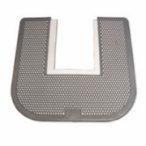 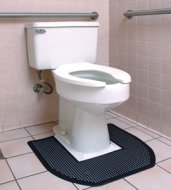
And Damage Control One Mat Is Effective For 4 - 6 Weeks NO Tape or Velcro |
||
|---|---|---|
"POTTY PAD " Toilet Mats keep restroom floors dry, clean and looking professional. These mats addresses slippery, foul-smelling floors around toilets and commodes. Most likely , floors surrounding toilets in highly used areas become wet. Both urine and leaking water can cause slippery surfaces and foul odors. These restroom mats are treated to minimize the smells caused by odor-producing bacteria. They also provide traction and a dry surface for patrons to comfortably stand on without fear of slipping or having their shoes absorb any liquids. Eliminates the need to constantly check and mop restroom areas ! These mats reduce maintenance, labor costs, slip and fall liability and just make your restrooms more pleasant place. SIZE : : 23" W x 21-5/8" D COLOR : : Black or Gray FRAGRANCE : Fresh - Scent Safety Data |
||
|
AVAILABLE IN CASE LOTS ONLY 6 each/case ( For Pricing, Go To : “POTTY PAD— under 'P'... ) |
|
|
|
"TOXIC FACTS" 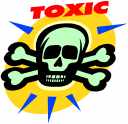
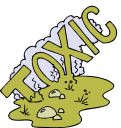 |
||
|---|---|---|
"TOXIC FACTS" : DID YOU KNOW THAT: (Summary of Information from "Healthy Choices", a non-profit organization comprised of doctors, nurses, environmental scientists and educators committed to teaching the public about the hazards of chemicals in our homes and how we can avoid or minimize the risks:)*-50% of all illness is due to poor indoor air quality----146 cause tumors ----218 cause reproductive complications ----314 cause biological mutation ----376 cause skin and eye irritations (Source: United States House of Representatives report, 1989) for children under the age of 6. (over 2.1 million accidental poisonings per year) (contains formaldehyde and ammonia in most brands) many which are fatal involving children! chemicals linked to allergies, birth defects, cancer, and psychological abnormalities. (Source: National Cancer Institute) ( Source: Center for Disease Control ) (Source: National Institutes of Health) (Source: Journal of the national Cancer Institute) (Source : Consumer Product Safety Commission) |